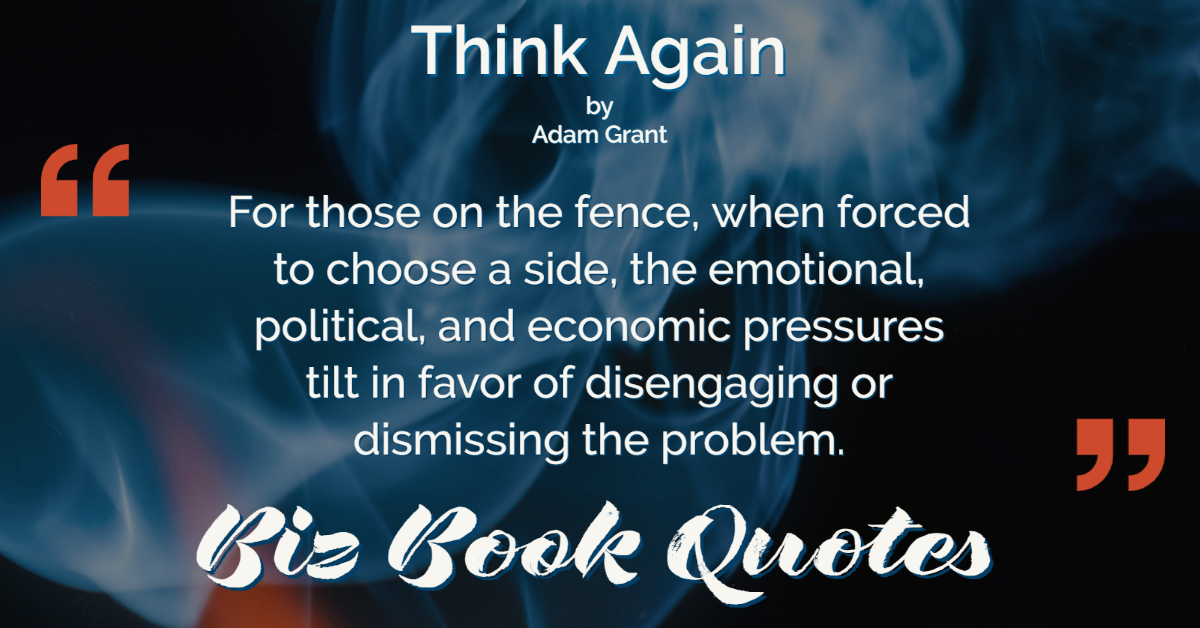 |
For those on the fence, when forced to choose a side, the emotional, political, and economic pressures tilt in favor of disengaging or dismissing the problem.
|
169 |
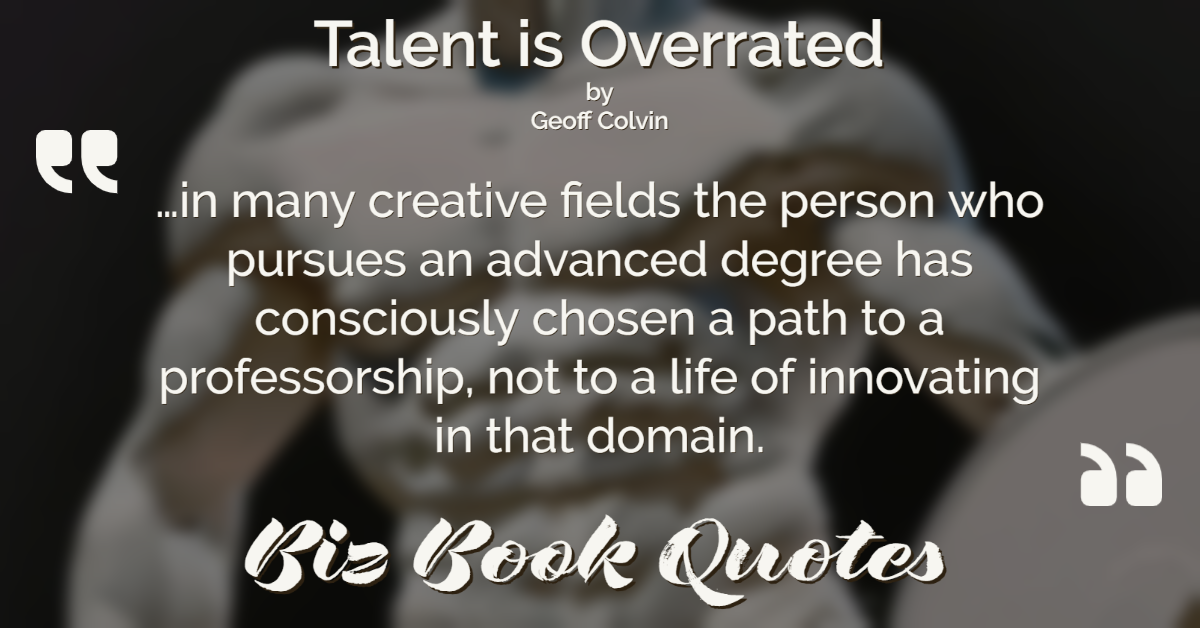 |
…in many creative fields the person who pursues an advanced degree has consciously chosen a path to a professorship, not to a life of innovating in that domain.
|
156 |
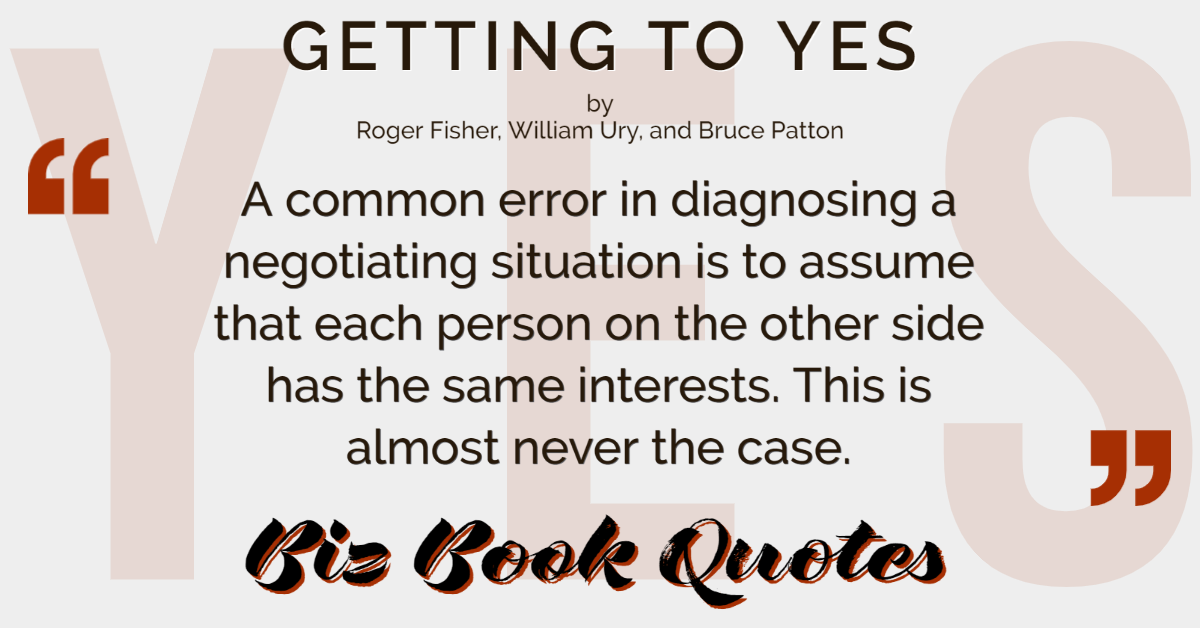 |
Only rarely will you deal with a decision-maker who writes down and weighs the pros and cons. You are trying to understand a very human choice, not making a mathematical calculation.
|
49 |
 |
…the first thing you are trying to win is a better way to negotiate – a way that avoids your having to choose between the satisfactions of getting what you deserve and of being decent. You can have both.
|
150 |
 |
Some paths are built upon durable habits that will lead to many more good results. Others involve flawed choices…
|
105 |
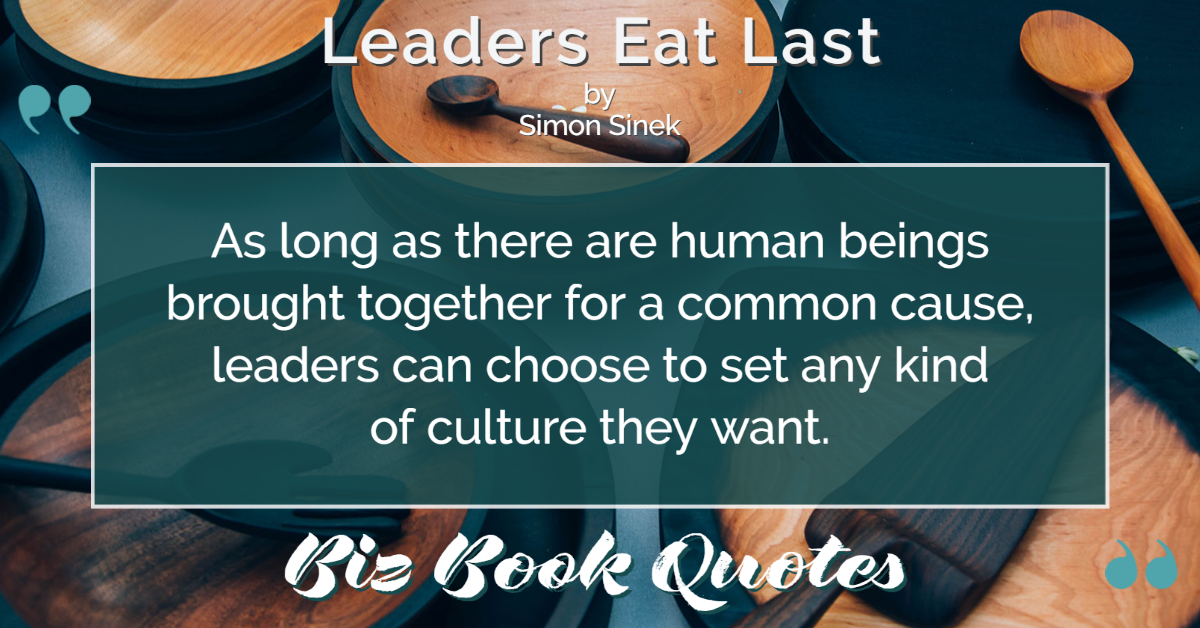 |
As long as there are human beings brought together for a common cause, leaders can choose to set any kind of culture they want.
|
75 |
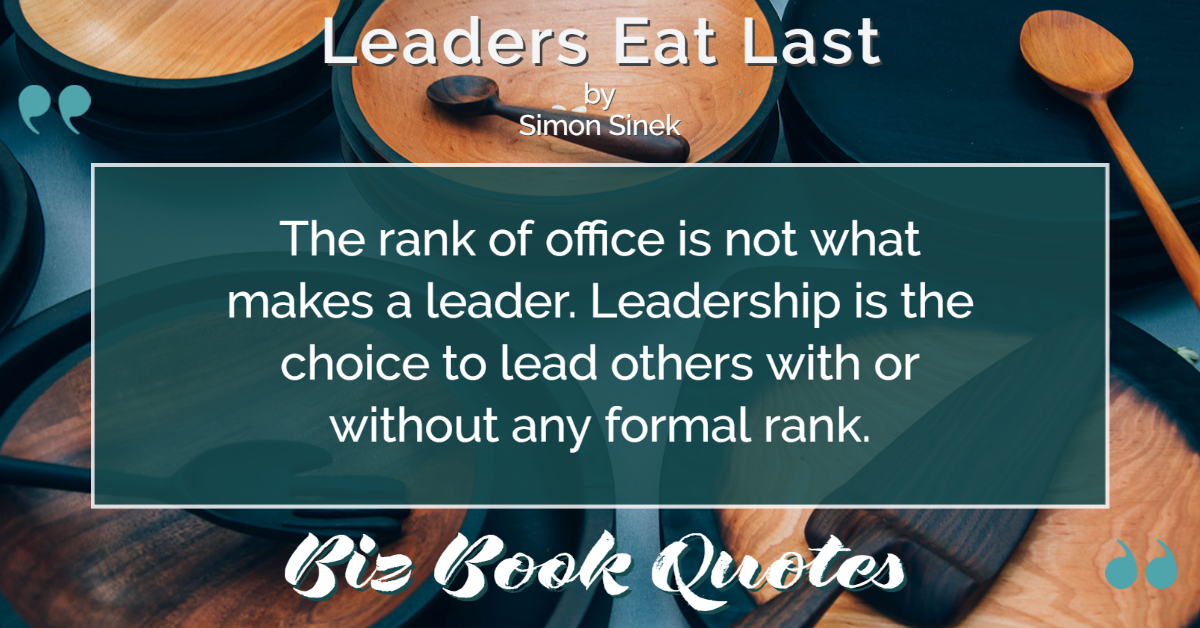 |
The rank of office is not what makes a leader. Leadership is the choice to lead others with or without any formal rank.
|
82 |
 |
…the only time you can be sure you should quit is when it’s no longer a decision, when you’re at the edge of the abyss or you’ve already stumbled into it. Then you have no choice but to abandon course.
|
15 |
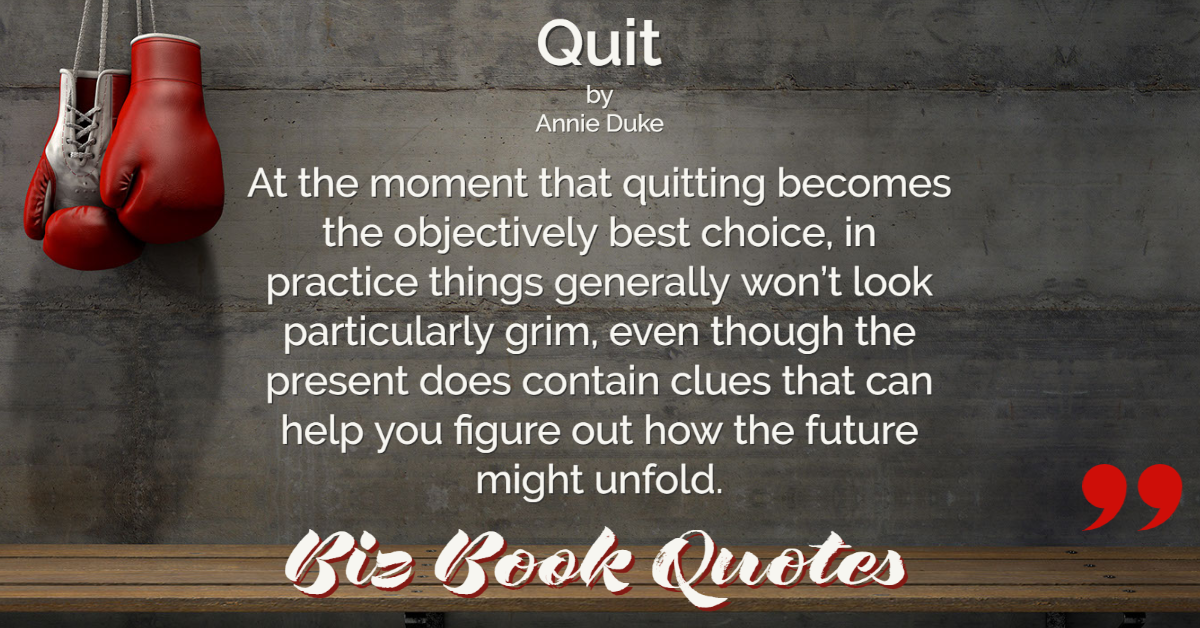 |
At the moment that quitting becomes the objectively best choice, in practice things generally won’t look particularly grim, even though the present does contain clues that can help you figure out how the future might unfold.
|
29 |
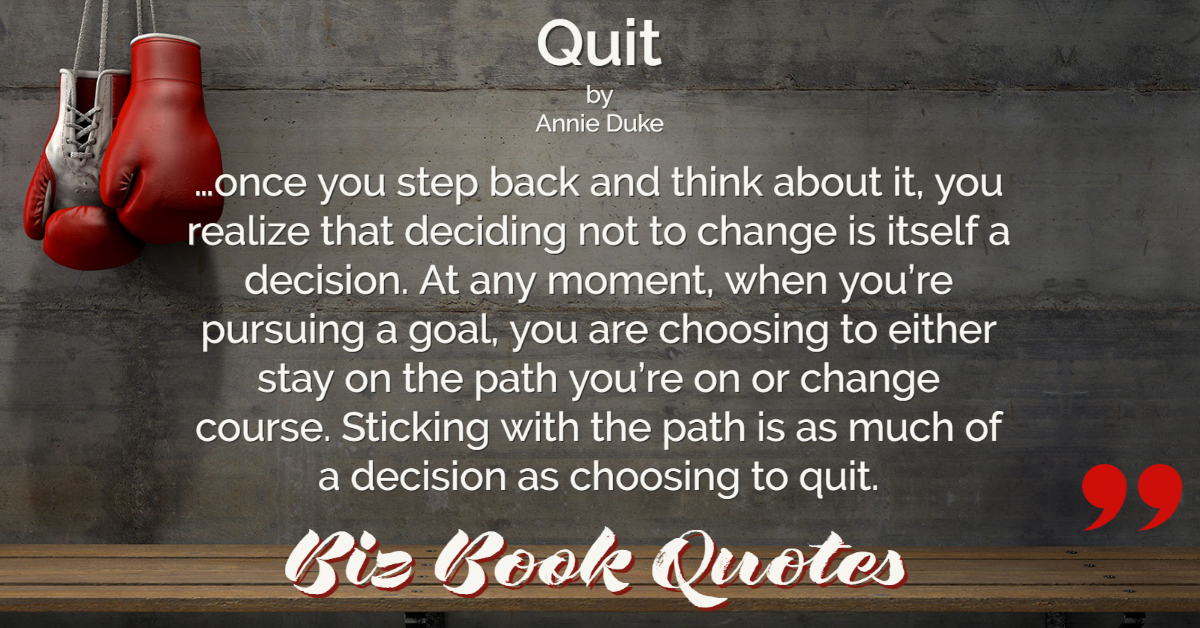 |
…once you step back and think about it, you realize that deciding not to change is itself a decision. At any moment, when you’re pursuing a goal, you are choosing to either stay on the path you’re on or change course. Sticking with the path is as much of a decision as choosing to quit.
|
152 |